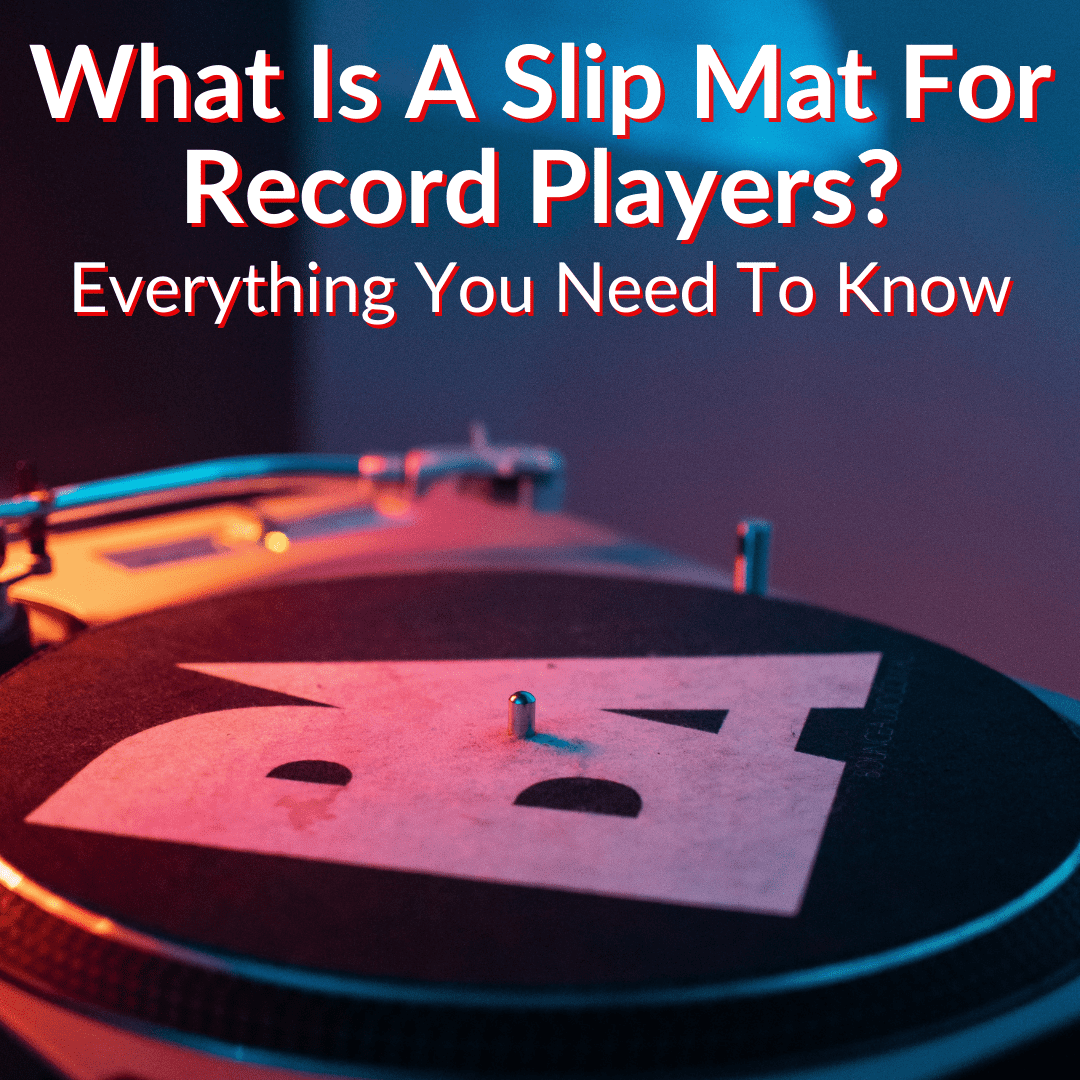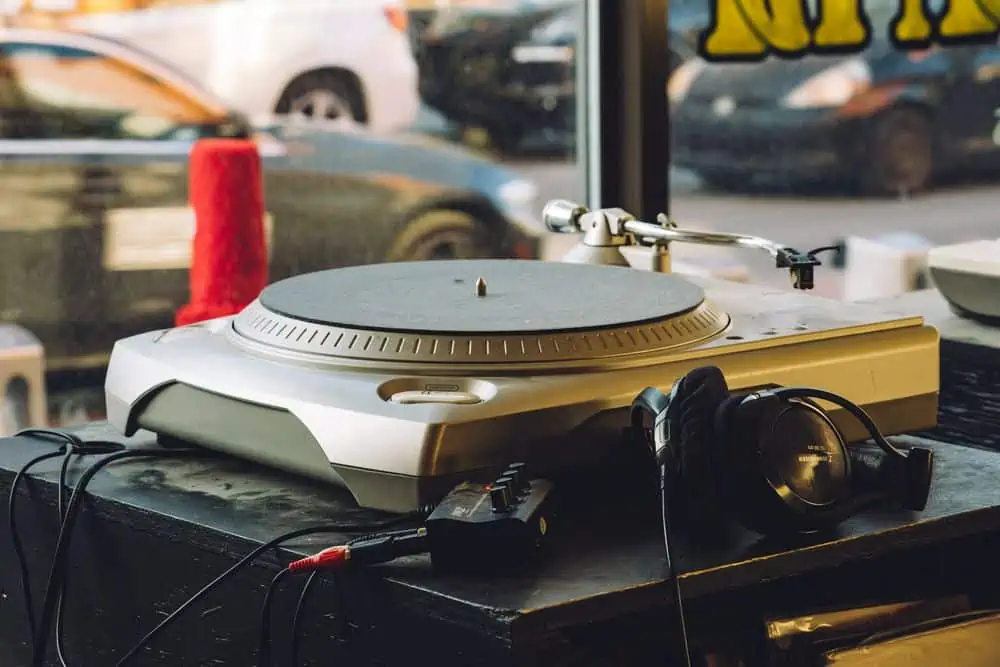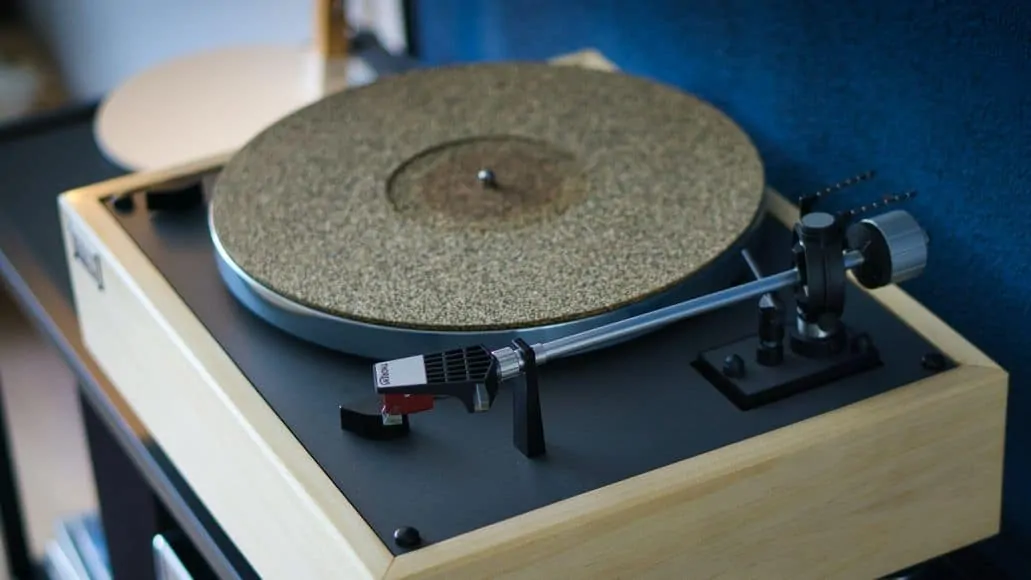
That could be true. But it probably isn’t.
If you use your turntable to DJ, you probably need a slip mat. But not always
If you use your turntable to listen to records, you do not need one.
So, what is a slip mat for record players and what function does it perform exactly?
Keep reading to learn everything you need to know about slip mats, including what differentiates them from platter mats.
What Is A Record Slip Mat?
Slip mats are thin mats that cover the deck plate on turntables. They serve many purposes, including improving sound, reducing resonances, assisting in scratching, and increasing the accuracy of cue-ins.
Slip mats are a necessary tool in any DJ’s equipment kit. They are placed between the deck plate and the vinyl record. The purpose of a slip mat is to allow the DJ to stop the record while allowing the deck plates to continue to turn.
If you try to stop a record without a slip mat, you risk damaging the deck plate and the vinyl record. Pressing too hard on the record could break it or damage the deck plate underneath.
Pressing too soft will slow the stop of the record and make mixes and cues inaccurate. Slip mats alleviate this risk and create better-quality performances.
Slip mats are usually made out of synthetic fabric. Some have thin plastic backings to make the mat slick. Since slip mats are most commonly made out of felt, static can become an issue.
Vinyl records can stick to the felt which makes swapping records tricky. Many slip mats are made out of synthetic, non-static fabric to avoid this problem.
Slip mats are classified by material, thickness, weight, and size. Thickness and weight selections are based on the preference of the DJ.
Thicker, heavier slip mats weigh down the deck platter which slows the rotations. Thinner and lighter slip mats are easier to use, but also deteriorate quickly.
The size of a slip mat is simply based on the size of the records being used by the DJ. Slip mats are available for 7-inch, 10-inch, and 12-inch records.
How To Set Up A Slip Mat
To get the most out of your slip mat, it is important to install it correctly. Here are the steps to do that.
Step 1: Remove The Rubber Mat From The Deck Plate
Your turntable should have come with rubber mats that cover the deck plates. The slip mat will be replacing the rubber mat.
The rubber mat should come off easily. If you are pulling or peeling to remove it, stop. You are most likely pulling at the rubber coating. The rubber coating is necessary for your turntable to function properly. Do not remove that.
Step 2: Place Your Slip Mat On The Deck Plate
Lay your slip mat over the deck plate, exactly where the rubber mat was before. You can hold on to the rubber mat for use later. These are not used in combination with a slip mat.
Step 3: Put A vinyl record On The Slip Mat
Place a vinyl record over the slip mat. The layers should be vinyl record on top, slip mat in the middle, and deck plate on the bottom. Now your slip mat is ready to use!
Optional: Add A Slick Layer
If you are going to be scratching or mixing, you may want to consider adding an additional slick layer between the deck plate and the slip mat.
Some DJs use thin plastic sheeting or wax paper for a better slide. If you choose to use either of these materials, place it directly on the deck plate, right after you remove the rubber mat. The slip mat goes on top of the plastic or wax paper.
It is important to keep in mind that plastic can sometimes make a windy or swooshing sound when placed under slip mats. This won’t be as noticeable in large, loud club-style arenas, but can be a nuisance in more intimate settings.
If you want to get the smoothness and speed of the plastic sheet without the added noise, consider buying a synthetic fabric slip mat with a thin plastic coating on the back.
Which Type Of Slip Mat Is Best?
Turntable slip mats are available in a variety of designs, materials, and sizes. Each DJ has a different preference. If you are just starting, you may want to try a few different styles to see which one you like better.
In general, the best slip mats for beginners are made of felt and are thin. These are easy to use and versatile.
If you want to scratch, select a slip mat that has a plastic layer on the bottom and a synthetic material on the top. The material gives you a grip, while the plastic coating gives you speed and accuracy.
Select a slip mat for its performance, rather than style. Some turntable slip mats are available in intricate designs and wild colors.
While these might look cool, you are paying more for the visual design and not the slip mat’s functionality. Choose one that functions best with your style of DJing.
The good news is that slip mats are not expensive. Most are under $40. This allows you to try different styles and materials without breaking the bank.
Platter Mats Vs Slip Mats
Platter mats sit on top of the deck plate. They improve sound quality by reducing vibrations and dampening resonances. Platter mats give the vinyl record a more natural, pure sound. They also reduce skipping, allowing for cleaner playback.
Platter mats are made from a variety of materials including rubber, cork, leather, felt, and acrylic. Each material provides a different improvement to the vinyl record’s sound.
For example, leather reacts best to bass tones. Cork is the most common material used for platter mats because cork mats are lightweight and perform well with all sounds and styles of music.
DJs also have platter mats custom-made with their logo. Platter mats can be decorative pieces that cover the deck plate when a record isn’t spinning. They serve as branding for DJs.
Platter mats are also available in stylized options for at-home turntables. They are nice covers for deck platters when the turntable is not in use.
A slip mat is a type of platter mat. Slip mats are platter mats that are specifically used for scratching, cutting, and mixing. Slip mats are usually made from felt or similar synthetic material. Slip mats provide the same qualities as other platter mats with the bonus of better cueing and mixing accuracy.
Do I Need A Slipmat For Record Player?
If you use your turntable to DJ, you will probably want to have a slip mat. It makes scratching, cutting and mixing so much easier. In fact, doing those things without one isn’t even really possible.
However, if you use your record player to listen to music only, there is no need to get a slip mat. It performs no useful function when simply playing vinyl records.



Leave a Reply